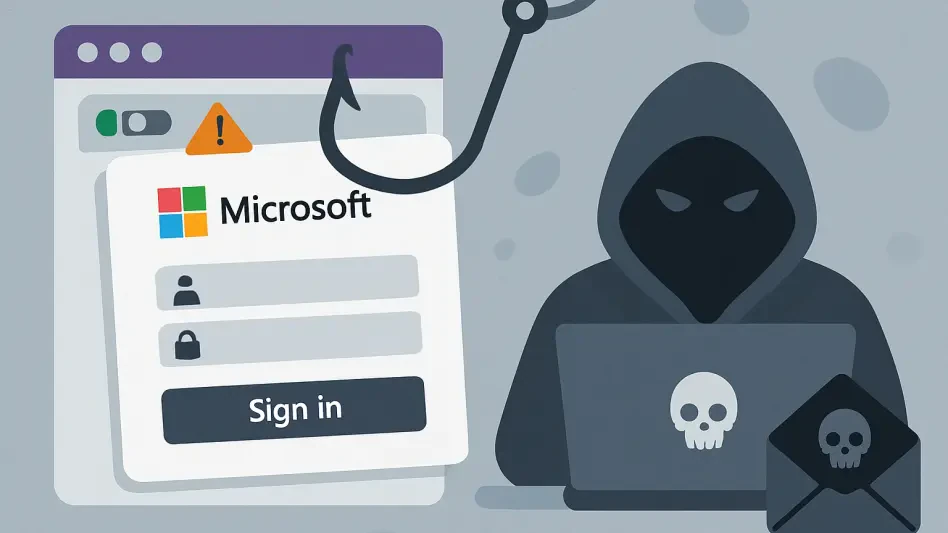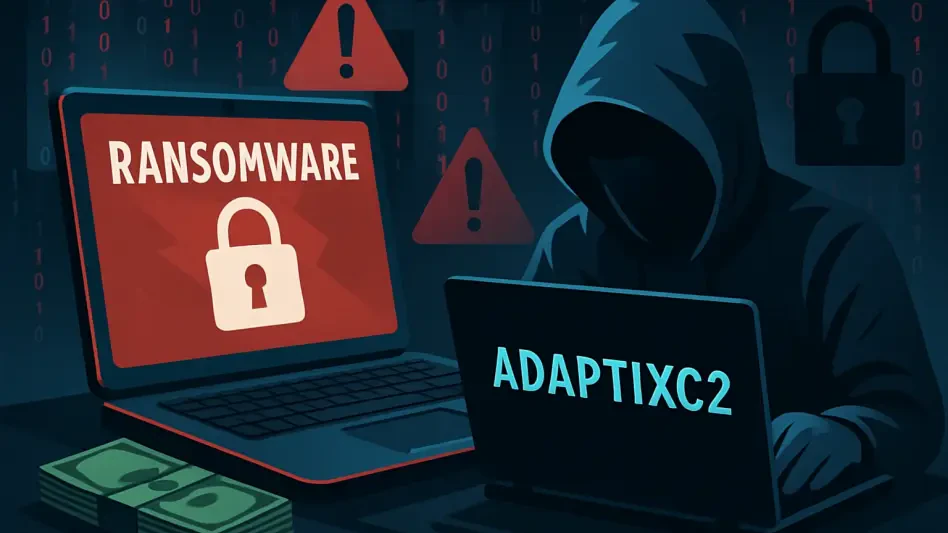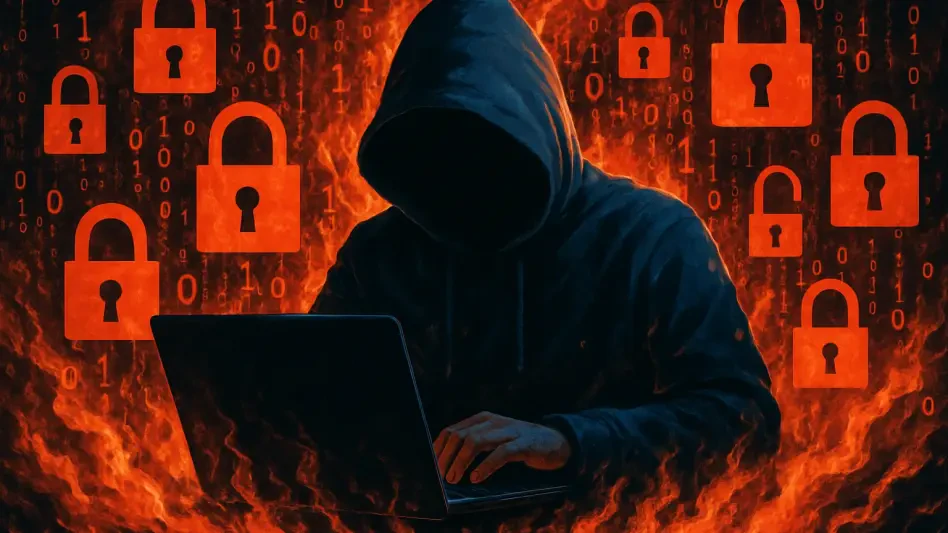What if the most dangerous email in an inbox appears to come from a trusted coworker, complete with a familiar name and urgent subject line, making it nearly impossible to distinguish from legitimate communication? In today’s digital workplace, cybercriminals are turning Microsoft 365, a cornerstone of business communication, into a weapon for phishing scams. These attacks aren’t just random spam; they’re meticulously crafted to blend into internal correspondence, exploiting the trust employees place in their own systems. This alarming trend is reshaping how organizations must approach cybersecurity, as the line between safe and malicious communication blurs.
The significance of this issue cannot be overstated. As cloud services become integral to operations, with millions of users relying on platforms like Microsoft 365, the potential for exploitation grows exponentially. Hackers are abusing legitimate features to bypass traditional security measures, creating a crisis of trust within companies. This story delves into the mechanics of these sophisticated phishing schemes, expert perspectives on the damage they cause, and critical steps businesses must take to protect themselves in an era where even internal emails pose a threat.
Why Internal Emails Have Become a Silent Danger
In many organizations, an email from a colleague is rarely questioned. Cybercriminals know this and are exploiting Microsoft 365 to send phishing messages that mimic internal communications. By leveraging the platform’s trusted environment, these attacks slip past suspicion, often appearing as routine updates or urgent requests. The result is a growing wave of successful scams that prey on human instinct to trust familiar names and subjects.
This tactic represents a shift in phishing strategies. Unlike external spam, which users are increasingly trained to spot, these internal-looking emails exploit a psychological blind spot. Employees, conditioned to act quickly on workplace correspondence, may click malicious links or share sensitive data without a second thought. The erosion of trust in what was once a safe communication channel poses a unique challenge for businesses everywhere.
The Growing Peril of Cloud Service Manipulation
As companies migrate to cloud platforms for efficiency, these tools have become prime targets for malicious actors. Microsoft 365, with its vast user base, offers hackers a fertile ground to exploit features designed for convenience. The abuse of such systems isn’t merely a technical issue; it’s a stark reminder of how reliance on cloud solutions can expose critical vulnerabilities when security measures lag behind adoption rates.
Recent data underscores the scale of this problem. Studies indicate that over 60% of organizations using cloud services have encountered security incidents tied to misconfigurations or feature abuse. Hackers capitalize on these gaps, turning trusted platforms into launchpads for phishing campaigns. This trend highlights a pressing need for businesses to reassess their cybersecurity posture as they integrate more cloud-based tools into daily operations.
Dissecting the Direct Send Phishing Tactic
One specific method gaining traction among cybercriminals involves Microsoft 365’s Direct Send feature, originally intended for devices like printers to send emails without passwords. Attackers exploit this functionality by using unsecured SMTP relays to craft messages that appear to come from within an organization. These emails often bear deceptive subject lines, such as “urgent task update” or “payment authorization,” designed to prompt immediate action from unsuspecting recipients.
The technical sophistication of these attacks is striking. By connecting through systems like Windows Server environments or third-party email security appliances, hackers manipulate vulnerable ports and outdated SSL certificates to maintain an air of legitimacy. Even when Microsoft’s security flags these messages as potential spoofs, many still land in users’ junk folders, where a single curious click can unleash havoc. This multi-pronged approach combines technical exploits with social engineering for maximum impact.
The consequences of falling for such schemes can be dire. A single compromised account can lead to data breaches, financial loss, or even broader network infiltration. With attackers refining their methods to evade detection, organizations face an uphill battle in identifying and neutralizing these threats before they cause irreversible damage.
Expert Warnings on the Trust Crisis
Cybersecurity experts have sounded the alarm on how these phishing campaigns exploit more than just technology—they target the very trust that holds organizations together. A recent report from industry researchers notes that attackers are “weaponizing the inherent confidence employees have in internal emails to deliver malicious payloads.” This insight reveals a deeper risk: beyond data theft, these scams can fracture workplace cohesion as staff grow wary of even legitimate communications.
The reputational fallout is another concern. When employees lose faith in internal systems, productivity suffers, and companies may face public scrutiny if breaches become known. Experts stress that this isn’t a niche issue but a systemic challenge requiring immediate action. Their observations, paired with evidence of phishing emails persisting in junk folders, underline the urgency for businesses to rethink how trust is managed in digital spaces.
Further analysis shows that the problem extends beyond individual organizations. As more companies adopt cloud solutions without robust safeguards, the collective vulnerability of entire industries increases. This broader perspective from specialists emphasizes that addressing these threats is not just a technical fix but a cultural shift in how digital trust is perceived and protected.
Safeguarding Against Deceptive Internal Threats
Countering the risks of Microsoft 365 phishing demands a multi-layered defense strategy. Organizations must start by auditing their email configurations to pinpoint weaknesses, such as exposed SMTP relays or unsecured ports, that hackers could exploit. Regular reviews of these settings can close potential entry points before they are abused.
Beyond technical fixes, disabling unnecessary features like Direct Send, if not required for operations, eliminates a key avenue for attacks. Strengthening authentication protocols, such as implementing DMARC, SPF, and DKIM, adds another layer of protection by ensuring only legitimate emails reach inboxes. These measures, though technical in nature, are critical in thwarting spoofing attempts that underpin many phishing schemes.
Equally important is employee education. Training staff to spot subtle signs of deception, even in internal-looking emails, can make a significant difference. Encouraging a habit of reporting suspicious messages fosters a vigilant culture that complements technical defenses. By combining these proactive steps, businesses can build a resilient shield against the evolving tactics of cybercriminals.
Reflecting on a Battle Fought and Lessons Learned
Looking back, the struggle against Microsoft 365 phishing scams revealed how deeply trust could be weaponized in the digital age. Each exploited feature and spoofed email served as a stark reminder that even the most reliable tools carried hidden risks when left unguarded. The ingenuity of hackers in blending into internal communications forced organizations to confront uncomfortable gaps in their security frameworks.
Moving forward, the path was clear: businesses had to prioritize continuous audits of cloud configurations to stay ahead of emerging threats. Investing in advanced authentication systems became non-negotiable, as did fostering a workforce trained to question the authenticity of every message. These steps promised a stronger defense, ensuring that trust in digital workplaces could be rebuilt on a foundation of vigilance and preparedness.
The fight also underscored a broader imperative for collaboration across industries. Sharing insights and strategies to combat these phishing tactics emerged as a vital next step, offering hope that collective action could outpace the adaptability of cybercriminals. With these measures in place, the horizon looked brighter for securing the tools that powered modern business, turning a once-hidden threat into a challenge that could be met head-on.








